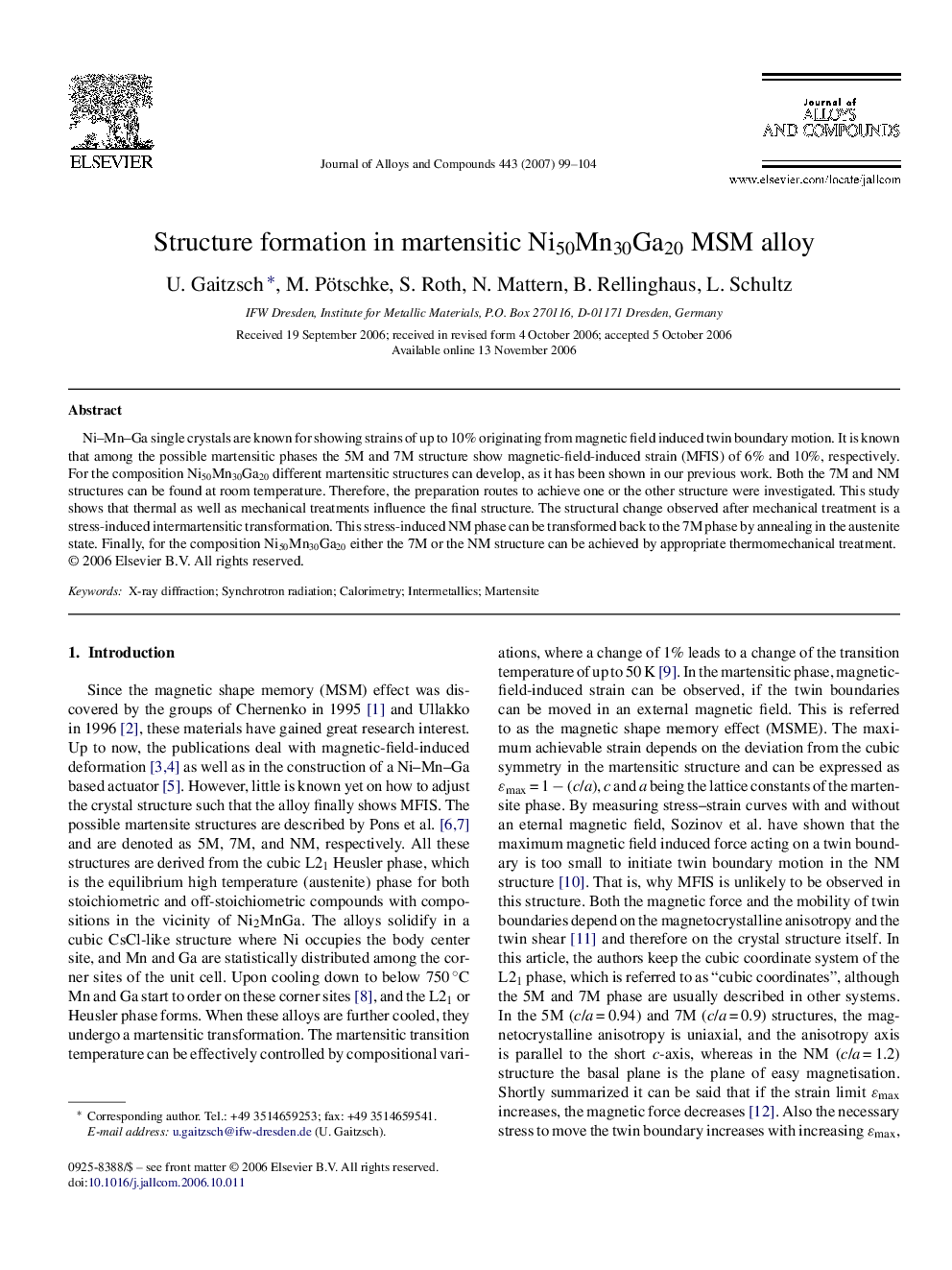| Article ID | Journal | Published Year | Pages | File Type |
|---|---|---|---|---|
| 1625315 | Journal of Alloys and Compounds | 2007 | 6 Pages |
Ni–Mn–Ga single crystals are known for showing strains of up to 10% originating from magnetic field induced twin boundary motion. It is known that among the possible martensitic phases the 5M and 7M structure show magnetic-field-induced strain (MFIS) of 6% and 10%, respectively. For the composition Ni50Mn30Ga20 different martensitic structures can develop, as it has been shown in our previous work. Both the 7M and NM structures can be found at room temperature. Therefore, the preparation routes to achieve one or the other structure were investigated. This study shows that thermal as well as mechanical treatments influence the final structure. The structural change observed after mechanical treatment is a stress-induced intermartensitic transformation. This stress-induced NM phase can be transformed back to the 7M phase by annealing in the austenite state. Finally, for the composition Ni50Mn30Ga20 either the 7M or the NM structure can be achieved by appropriate thermomechanical treatment.
